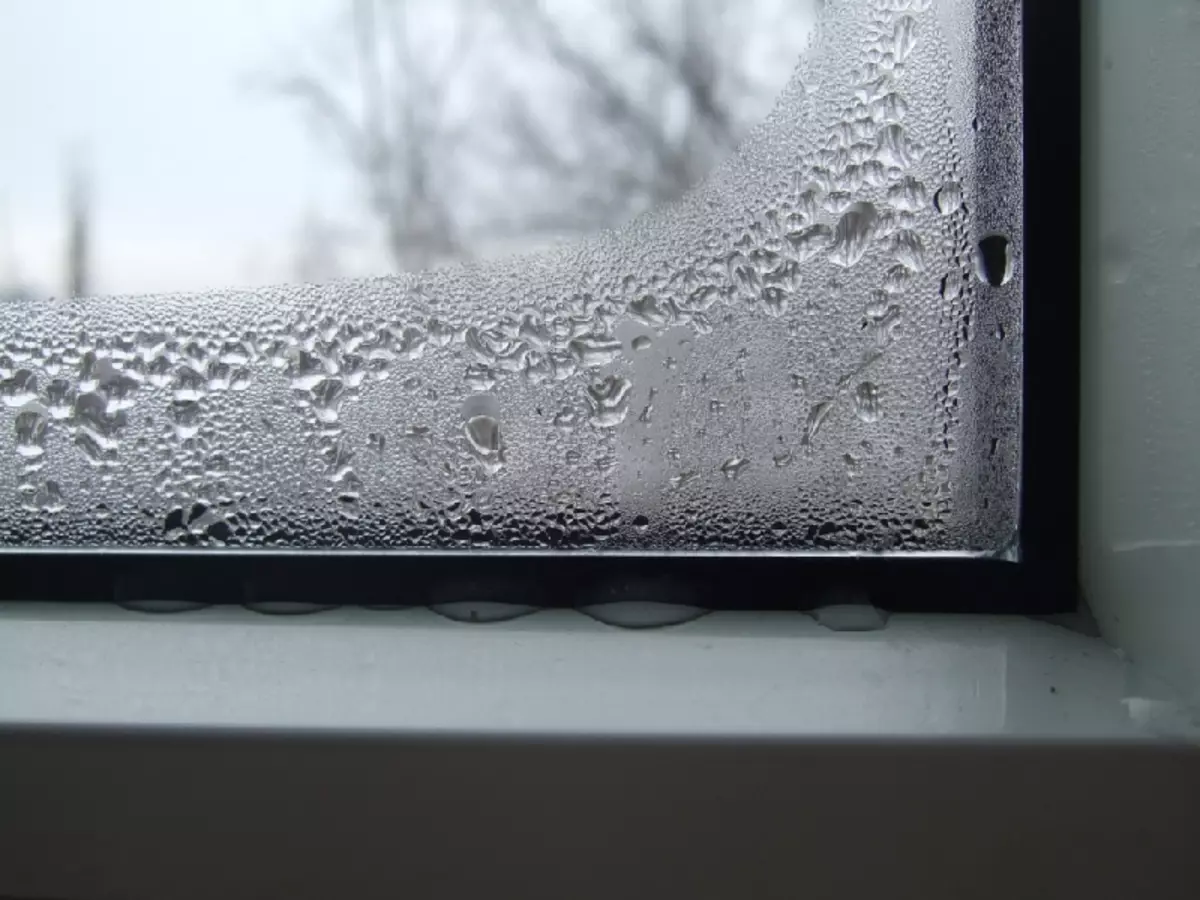
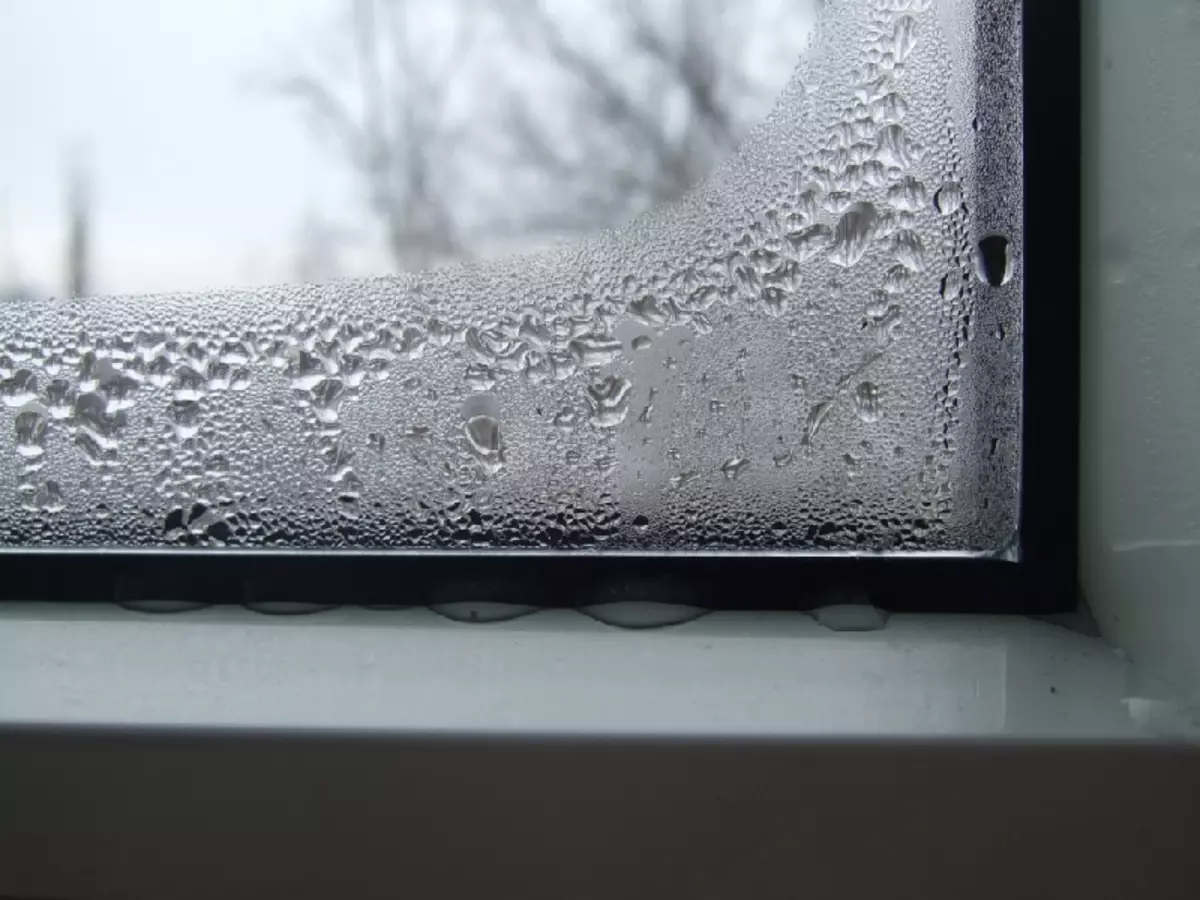
The dew point is the temperature of the water vapor, below which the moisture contained in it is cooled isobarically.
Make a house dry and warm wants everyone. Therefore, many use the most different insulation. But work on the heat insulation of the walls is not so simple, as it seems. Quite often happens that insulated, she suddenly begins to wet, the traces of condensate are noticeable. They appear not immediately, usually only in a year or three after all work works were performed.
Therefore, not everyone guess that the occurrence of condensate on the surface is associated with incorrectly made insulation. What is the reason for such an unpleasant phenomenon? Everything is very simple: this is a dew point.
What is a dew point?
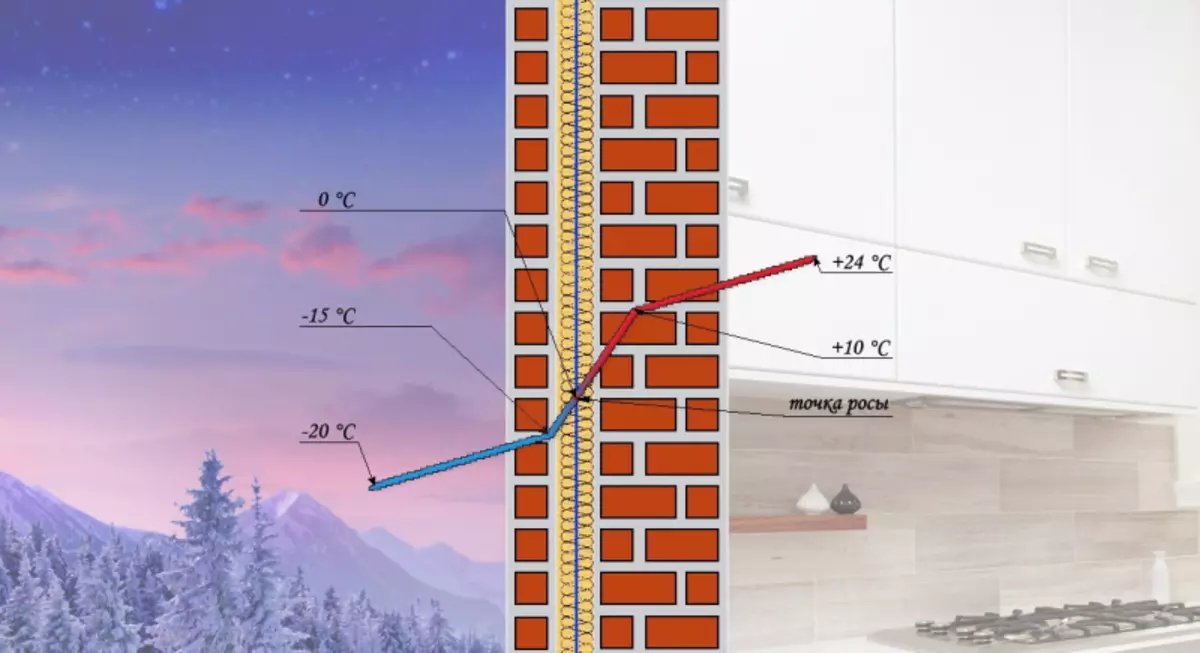
Scheme of formation point of dew in the wall.
When you insulate the surface from the inside of the room, then you burn it from the heat of the room. Thus, the position of the dew point shifts inside, closer to the room, the temperature of the wall itself decreases. And what conclusion from this can be done? The occurrence of condensate.
According to the definition, the dew point is the level of temperature at which condensate begins to fall, that is, the moisture in the air turns into water and settles on the surface. This point may be in different places (outside, inside, in the middle, closer to any of its surface).
Depending on this indicator, the wall remains dry all year round or wet when the temperature is lowered on the street.
The location of the dew point depends on what level of moisture inside the house, temperature.
For example, if the temperature in the room is + 20 ° C, and the level of humidity is 60%, the condensate falls on any surface already with a decrease in temperature to + 12 ° C. If the level of humidity is higher and is 80%, then the dew can already be seen at + 16.5 ° C. With a humidity of 100%, the surface wet at a temperature of 20 ° C.
Consider situations arising from the insulation of the foam outside or from the inside:
- Position point for a laptile surface. It can be in the thickness of the wall closer to the street, about between the outer surface and the middle. The wall for any decrease in temperature does not wet, it remains dry. It often happens that the point is closer to the inner surface, then the wall is in most cases dry, but wets with sharp decreases of temperature. When the indicator on the inner surface of the wall remains wet all winter.
- When insulating the foam outside the house, several situations may occur. If the selection of insulation, more precisely, its thickness was carried out correctly, the dew point will be in the insulation. This is the rightmost location, in this case, the wall will remain dry under any circumstances. If the layer of thermal insulator was less, then three options for the dew point is possible:
- In the middle between the central part of the wall and the outer - the wall remains dry almost all the time;
- closer to the inner surface - the discharge of dew with cooling;
- On the inner surface - winter wet is constantly.
Article on the topic: varieties and rules for mounting filters of rough water purification
To determine the indicator of condensate, you can use such a formula:
Tr = (b * y (t, Rh)) / (A-Y (N, RH))
Tr is a dew point,
Permanent values: A = 17.27 and B = 237.7 degrees (Celsius).
Y (T, Rh) = (AT / (B + T)) + Ln (RH)
T - temperature,
Rh is a level of relative to humidity (more zero, but less than a unit),
LN - logarithm.
When using the formula, it is necessary to consider from what material the walls are made, what is their thickness and much more. Better such calculations perform using special computer programs.
When is an internal insulation possible?
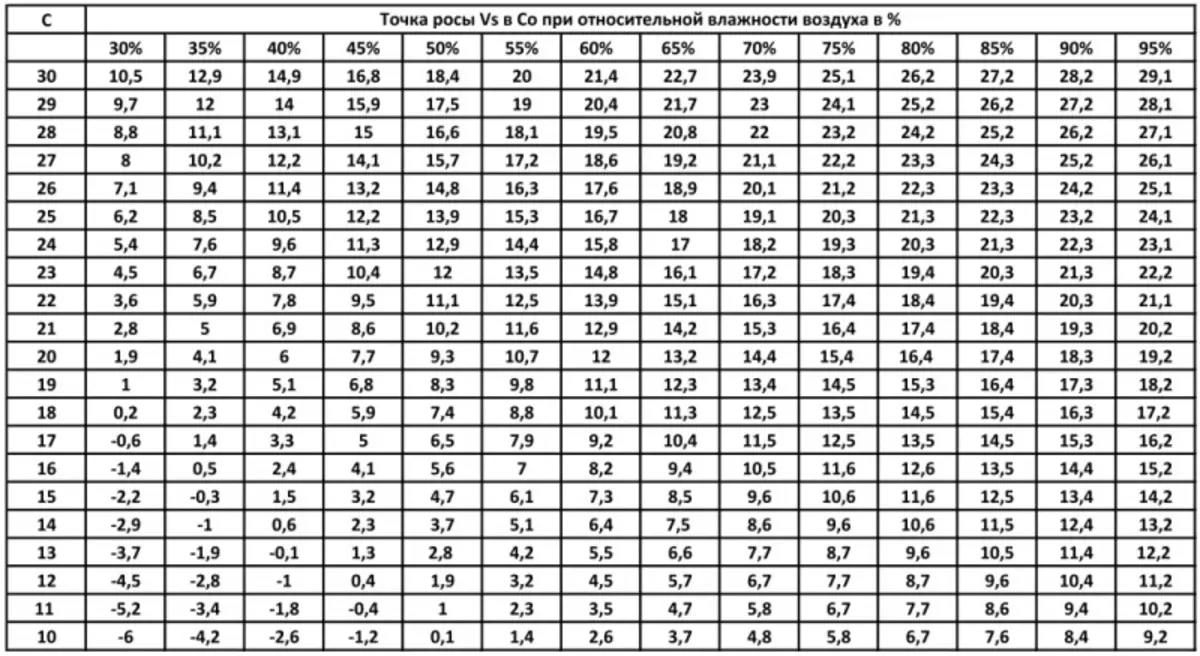
Table definition of the dew point depending on the air temperature and humidity.
It is not always possible to carry out insulation from the inside, since with the incorrectly performed actions of the dew will constantly fall out of the inside, leading all building materials in full disrepair, creating a noncomfortable microclimate inside. Consider when making insulation is not recommended from the inside, from which it depends.
You can or can not be insulated from the inside? The solution to this issue depends largely on what will happen with the design after the work. If the wall remains in a dry whole year, then work on its insulation from the inside of the room can be carried out, and in many cases it is even necessary. But if she constantly wet every winter, then it is impossible to carry out thermal insulation categorically. It is allowed only if the design is dry, and its wetting occurs extremely rarely, for example, once in ten years. But in this case, work should be carried out very carefully, since otherwise such a phenomenon as a dew point will be observed constantly.
Consider from which the appearance of the dew point depends, how to find out, you can or do not insulate the walls of the house from the inside.
As already spoke, the dew point arises because of such factors as:
- humidity;
- The temperature indoors.
Article on the topic: Benches from the profile pipe do it yourself: technology, photo
The humidity in the room depends on the availability of ventilation (exhaust, supply ventilation, air conditioners, etc.) and from the residence mode, temporary or permanent. The temperature inside affects how qualitatively insulation was laid, what is the level of thermal insulation of all other houses of the house, including windows, doors, roofs.
From here we can conclude that the consequences for internal insulation depend on:
- The temperature of the condensate moisture drops, that is, from the dew point;
- From the position of this point to thermal insulation and after it.
How to determine where the dew point is? This value depends on many parameters, among which it is necessary to allocate:
- thickness, wall manufacturing material;
- middle temperature indoors;
- The average temperature is outside (the effect of the climatic zone, the average weather conditions during the year);
- indoor indoor;
- The level of humidity on the street, which depends not only from the climate, but also on the operating conditions of the house.
We will collect all the factors in a single whole
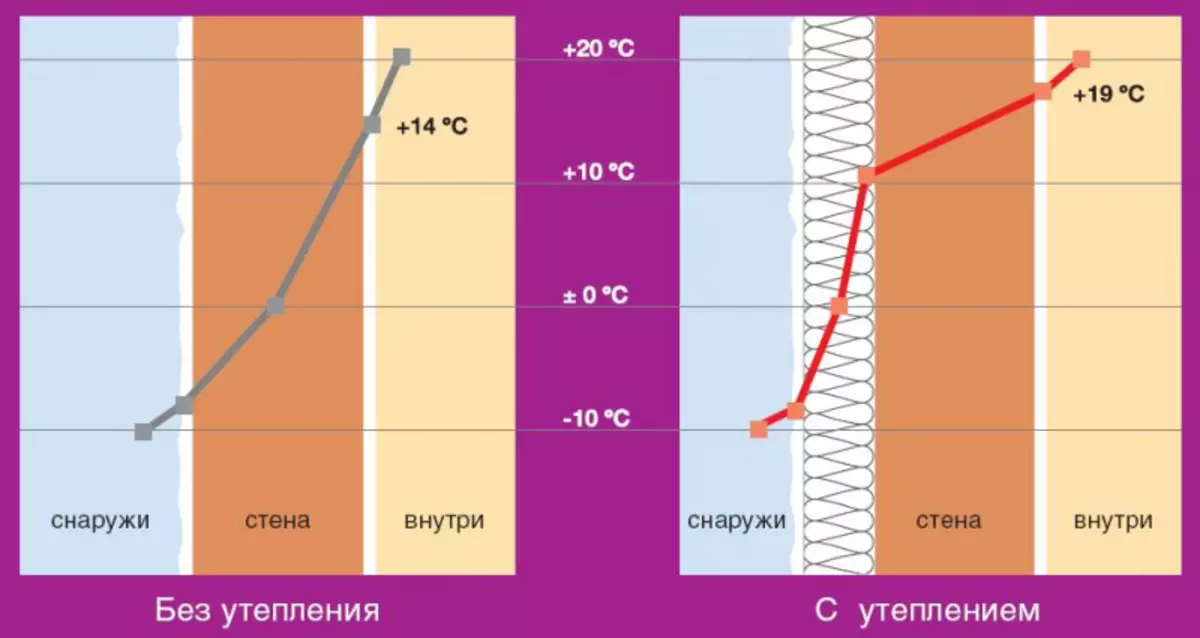
Schedule of thermal resistance and displacement of the dew point when using insulation.
Now we can collect all the factors that influence the dew point to be located:
- Mode of residence and operation of the house;
- availability of ventilation and its type;
- the quality of the heating system;
- quality of work when insulating foam or other material of all house designs, including roof, doors, windows;
- the thickness of the individual layers of the wall;
- indoor temperature, outside;
- indoor humidity, outside;
- climatic zone;
- Operating mode, i.e. What is outside: street, garden, other room, auxiliary garage, greenhouse.
Insulation from the inside is possible, based on all the factors given, in such cases:
- with constant accommodation in the house;
- when installing ventilation according to all standards for a particular room;
- With the normal operation of the heating system;
- with a heatel, which is laid for all house designs in need of thermal insulation;
- If the wall is dry, has the necessary thickness. According to the norms, with the insulation of the foam, mineral wool and other material, the thickness of such a layer should not be greater than 50 mm.
Article on the topic: Four-sheet roof for a gazebo with your own hands, how to design and build it
In other cases, it is impossible to perform insulation from the inside. As practice shows, in 90% of the cases of the wall of the house can be insulated only outside, as it is quite difficult to ensure all the conditions, and often not completely feasible.
The consequences of incorrect heat insulation
Cases of improper insulation of the house are rare. Most often it happens when it is impossible to lay thermal insulation from the inside, but you did it. In this case, even with the best insulation, various problems will quickly begin to occur, but at first it is wet walls. As a result, the decorative finish loses its attractive appearance. After that, the insulation is gradually wet.
It all depends on what exactly the material used during the work: the foam does not wet, while many other materials simply will not have time to dry, after which traces of mold begin to appear on the surface, the fungus, which is no longer able to get rid of it. Therefore, it is much easier to immediately foresee how and under what conditions it is possible to carry out work on the insulation of the house with foam or other material than spending funds and time to eliminate the consequences of improper performance.
The dew point is the temperature level at which condensate appears. The appearance of moisture in the insulation of foam depends on many factors, including from the internal temperature in the room, from the values of the humidity level. Quite often constant high humidity, and therefore traces of mold on the surface, arises due to incorrectly carried out work on the warming of the house, so it should not only understand what the dew point is, but under what circumstances it occurs, how to avoid this negative phenomenon .
